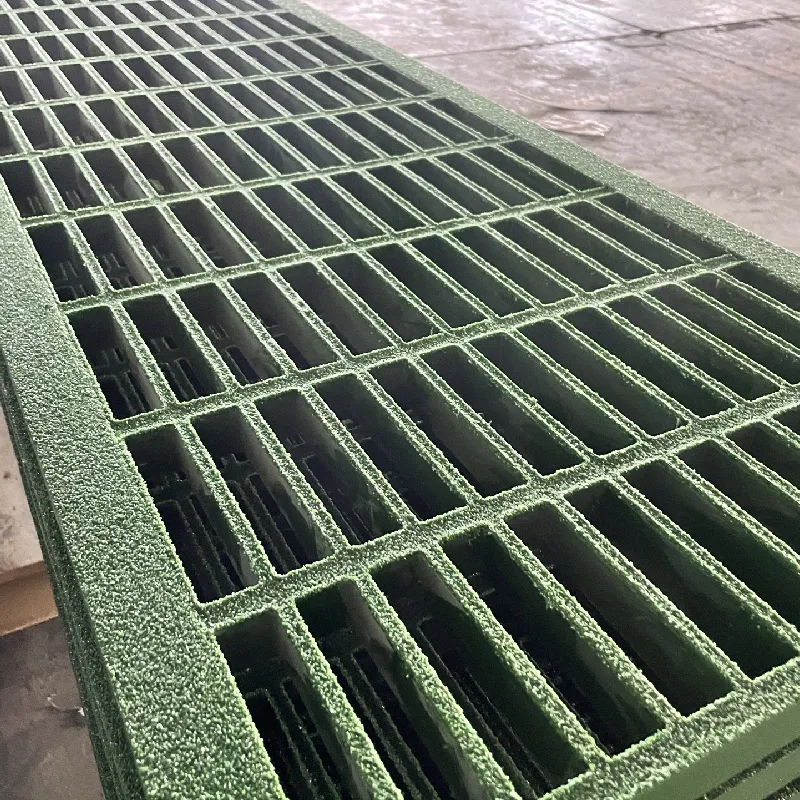loading...
- No. 9, Xingyuan South Street, Dongwaihuan Road, Zaoqiang County, Hengshui, Hebei, China
- admin@zjcomposites.com
- +86 15097380338
- Welcome to visit our website!
FRP Louvers - Durable, Lightweight, and Efficient Ventilation Solutions
The Advantages of FRP Louvers in Modern Architecture
In the ever-evolving world of architecture and construction, materials play a pivotal role in enhancing both functionality and aesthetics. Among the innovative materials gaining popularity today is Fiberglass Reinforced Plastic (FRP). Among its many applications, FRP louvers stand out for their unique advantages, making them an excellent choice for modern building projects.
What are FRP Louvers?
FRP louvers are ventilation devices constructed from fiberglass reinforced plastic, renowned for their durable and lightweight properties. These louvers are designed to regulate airflow while providing protection from the elements, making them ideal for various architectural applications such as industrial facilities, commercial buildings, and even residential projects.
Durability and Longevity
One of the primary advantages of FRP louvers is their exceptional durability. Unlike traditional materials, such as wood or metal, FRP is highly resistant to corrosion, rust, and deterioration. This longevity is particularly beneficial in harsh environments, such as coastal areas where saltwater exposure can significantly damage other materials. Additionally, FRP can withstand extreme temperatures, ensuring that louvers maintain their structural integrity over time, ultimately reducing maintenance costs and increasing lifespan.
The Advantages of FRP Louvers in Modern Architecture
FRP louvers are significantly lighter than their metal counterparts, making transportation and installation more convenient. This lightweight nature not only eases the burden on structural supports but also allows for easier handling during installation. As a result, construction timelines can be shortened, leading to overall project efficiency. The ease of installation, coupled with minimal maintenance requirements, makes FRP louvers a practical choice for both builders and architects.
frp louver

Energy Efficiency and Aesthetic Versatility
In today's world, energy efficiency is a top priority for many builders and property owners. FRP louvers contribute to energy savings by effectively regulating airflow and minimizing the need for additional cooling and heating systems. By allowing natural ventilation, they help maintain comfortable indoor temperatures while reducing reliance on artificial climate control methods.
Moreover, the aesthetic versatility of FRP louvers adds to their appeal. They can be customized in various colors, shapes, and sizes to complement the architectural design of any building. This adaptability enables architects to integrate louvers seamlessly into their designs, enhancing both the functionality and visual appeal of structures.
Environmental Impact
As sustainability becomes increasingly essential in construction, FRP materials offer an eco-friendly option. The production of FRP generates fewer greenhouse gas emissions compared to traditional materials, and its long lifespan minimizes the need for frequent replacements. Additionally, FRP can be manufactured with recycled materials, further reducing its environmental footprint.
Conclusion
As modern architecture continues to evolve, the use of advanced materials like FRP is becoming more prevalent. FRP louvers provide a combination of durability, lightweight construction, aesthetic flexibility, and energy efficiency that can meet various architectural demands. Their ability to withstand harsh environmental conditions while reducing the overall environmental impact positions FRP louvers as a smart choice for contemporary building designs. With these benefits in mind, it's clear that FRP louvers will play an increasingly important role in shaping the architectural landscape of the future.
-
GRP Structures: The Future of Lightweight, High-Performance EngineeringNewsJun.20,2025
-
FRP Water Tank: High-Performance Storage for Corrosive and Clean Water SystemsNewsJun.20,2025
-
FRP Square Tube: The New Industry Standard for Chemical and Structural ApplicationsNewsJun.20,2025
-
FRP Pultruded Profiles: The Ultimate Choice for Lightweight Structural StrengthNewsJun.20,2025
-
FRP Handrails: The Safer, Smarter, and Stronger Choice for Modern InfrastructureNewsJun.20,2025
-
FRP Grating: The Smart Solution for Durable, Lightweight Industrial FlooringNewsJun.20,2025
-
Why Choose a Galvanized Water Tank for Your Storage NeedsNewsMay.21,2025
